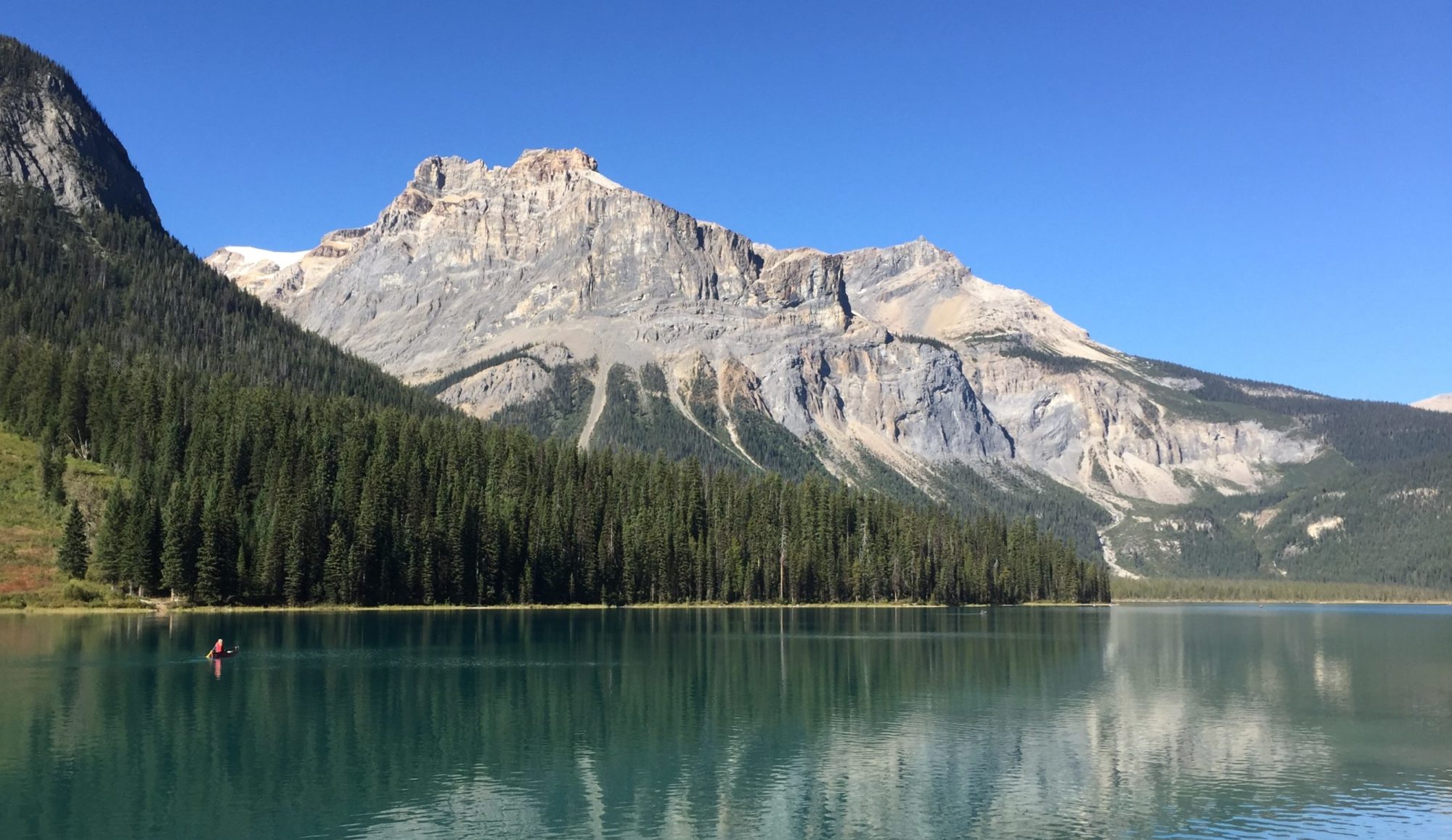STILL LIFE
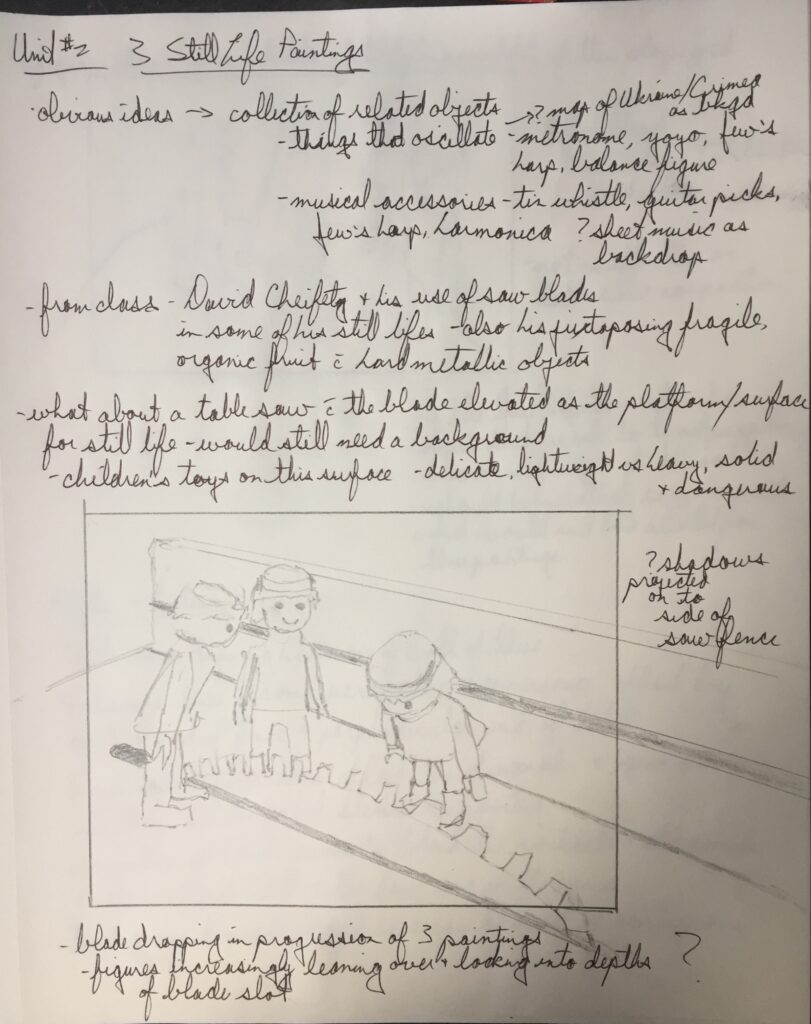

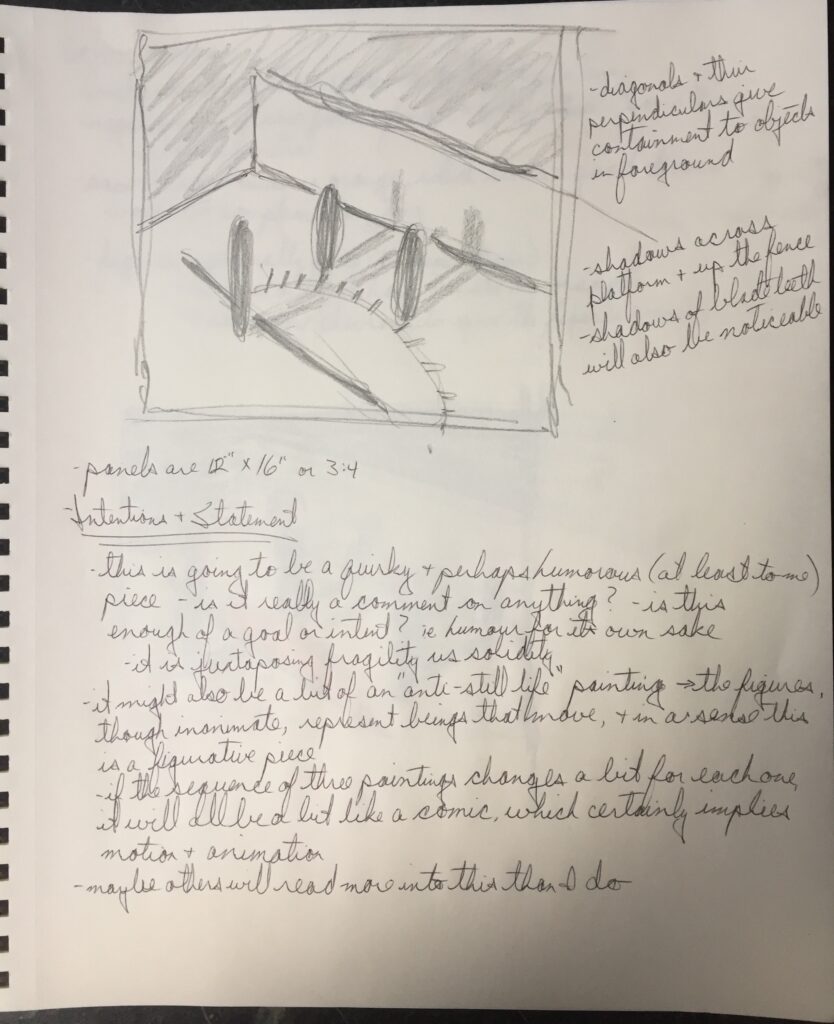

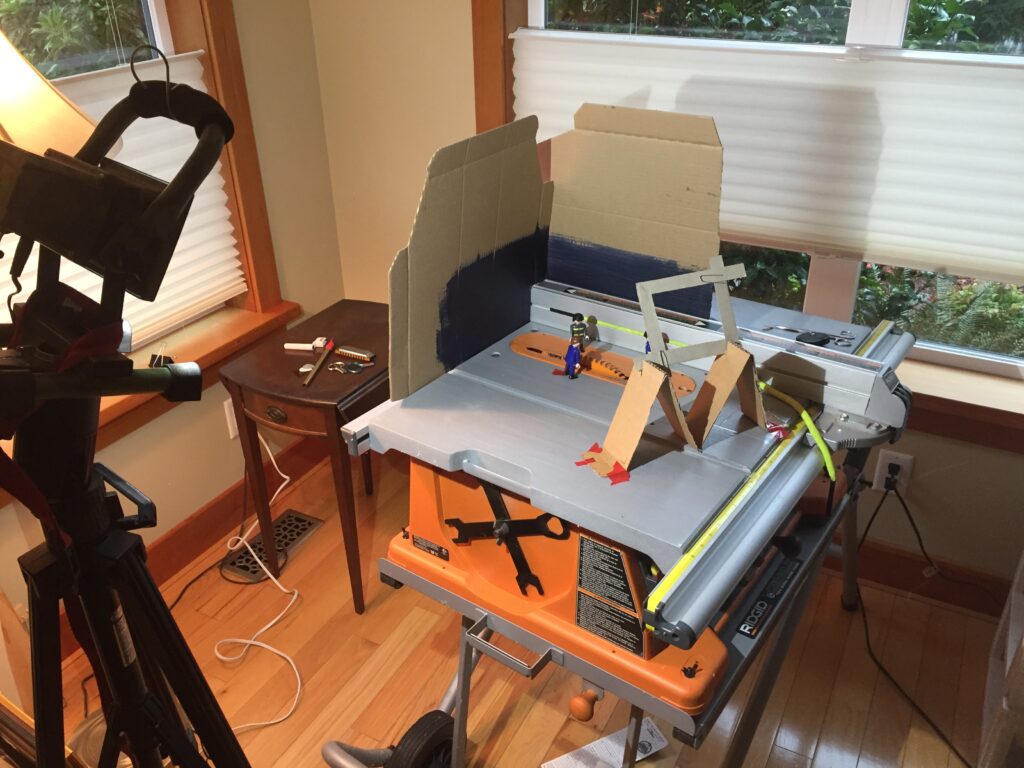
Still life set-up. Powerful lamp/spotlight created the main shadows. Viewfinder/frame was secured in place, so I could use the same markers and reference points every time I went back to it. I put the fluorescent yellow glasses strap in the recess in the fence so I could paint the shadows as if there was no recess.
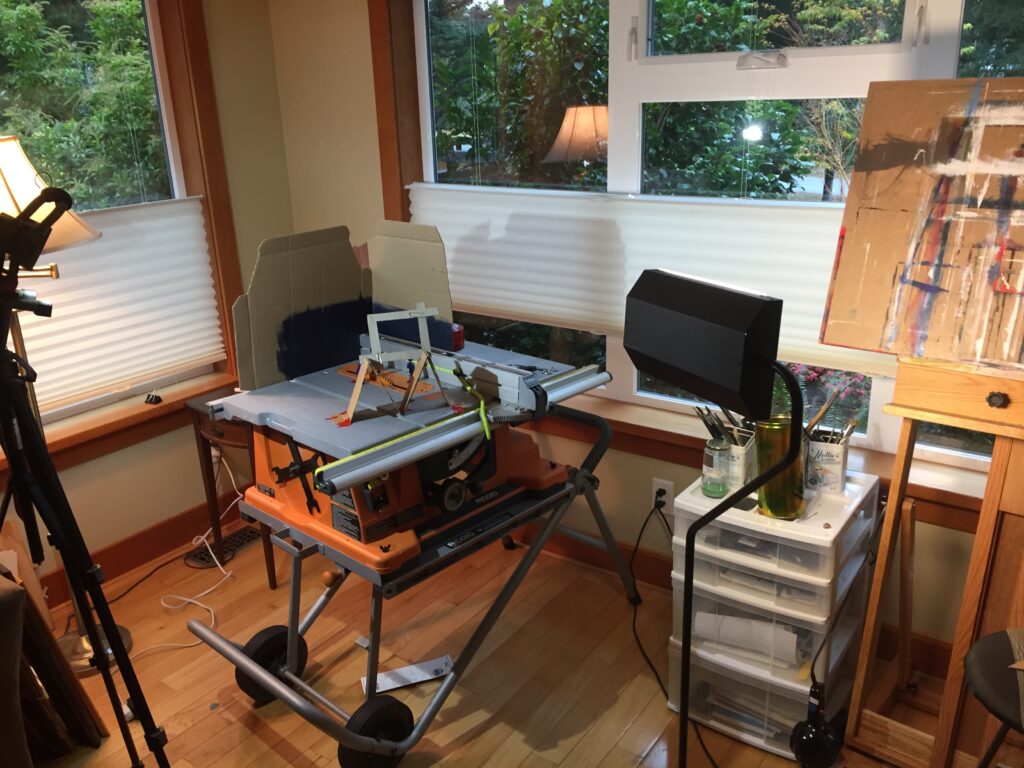
My whole set-up. Going back to the viewfinder every time I needed to refresh my view quickly became very tedious and time consuming. In the end, I relied much more on photographs.
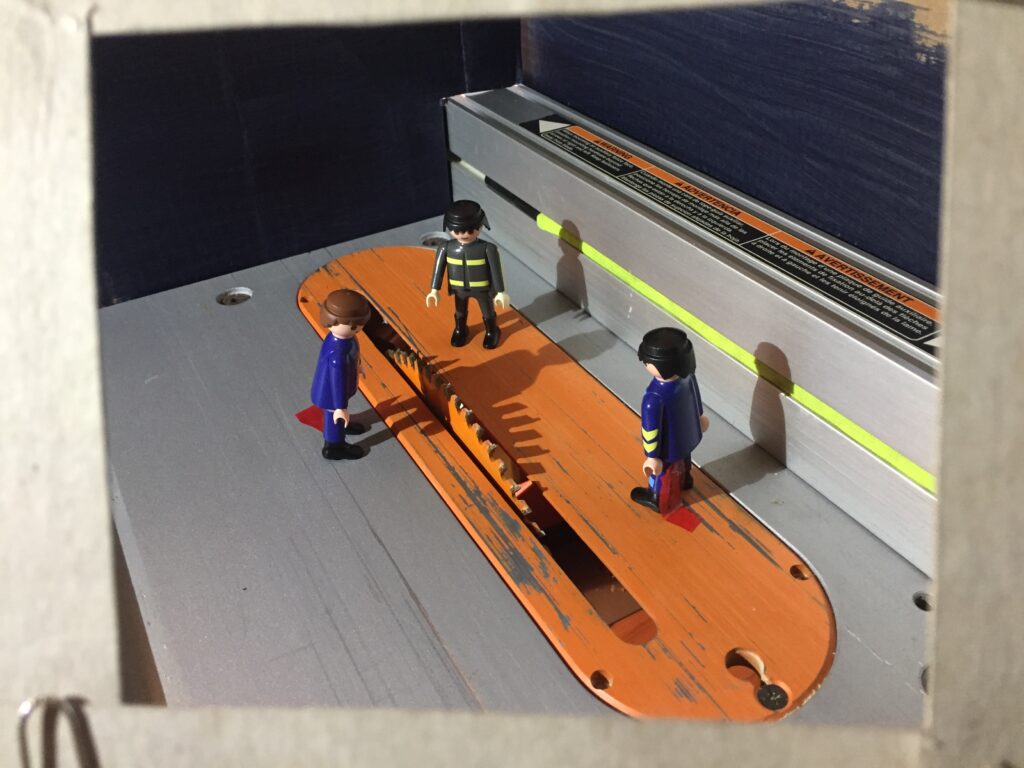
View through the cardboard frame/viewfinder. This wasn’t the one I ultimately used, but not far off.

Dry brushing throughout, except for the facial features. On phthalo turquoise underpainting, which remains a significant feature of the painting. Smaller details were harder to dry brush and I’m sure I wasn’t dry brushing some of those parts. Still, I think the overall dry brushing effect is obvious.
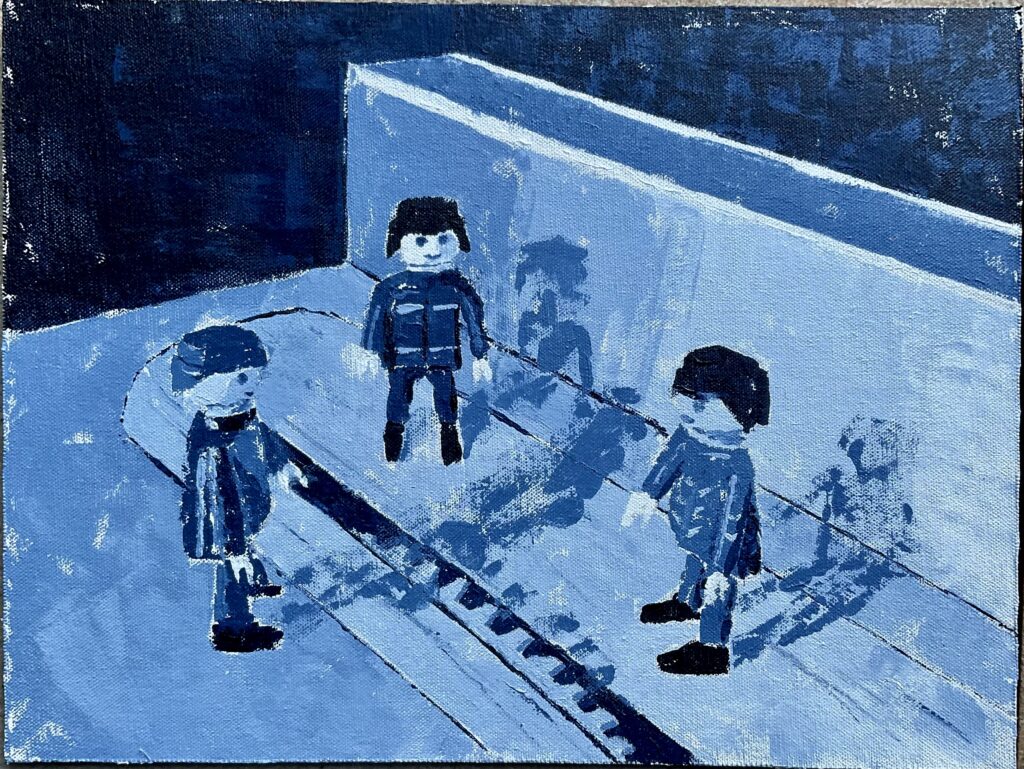
Monochromatic with Payne’s Grey. Except for the few facial features, this was all done with drywall scrapers and palette knives. I enjoy this technique: it’s very much like sculpting and it forces me away from that tight, controlled technique I’m so used to using. It also doesn’t lend itself to small detail, but as I look back on it, maybe that forces me to loosen up more and I think the result is effective.
No underpainting used. Saw blade perspective is off a bit.
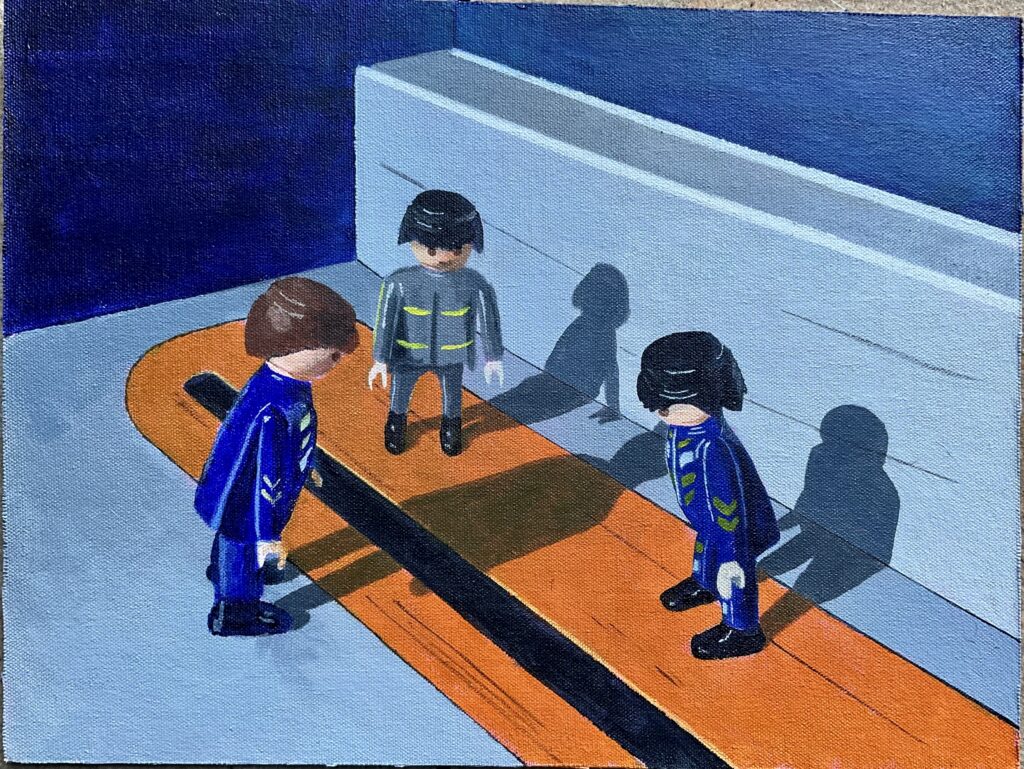
Commentary: My goal with these pieces was to force myself to try looser techniques and compare that to my usual tighter and detailed style, as with this third painting. I enjoyed using the scrapers the most, and I think this could be a very effective technique with a larger piece. I also wanted to make a piece that was quirky and perhaps humorous, not intending any meaning other than that.
